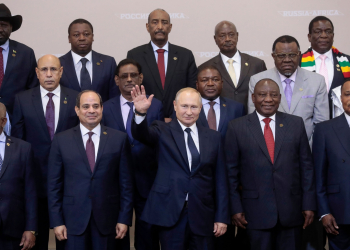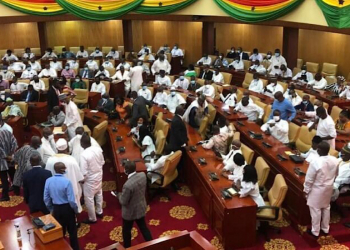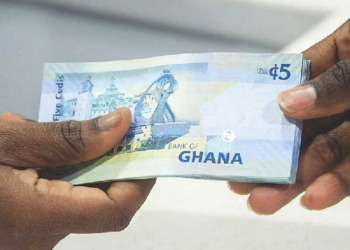When I wrote on the high expectations over 2017 Hajj, I was just trying to prophesy from experience the nitty-gritty that has over the years controlled the fares paid by Nigerian pilgrims for their holy journeys to Makkah. May be it did not attract the attention of the authorities or the public because that was before the announcement of the 2017 Hajj fare by the National Hajj Commission of Nigeria (NAHCON) early June this year. It is interesting to note that Hajj management in Nigeria has been turned around and that going to Hajj has become as easy as any other international journeys, except for the stresses from the tedious movements to attain the spiritual upliftment while in the holy sites.
What matter much for the trip are health and cash. Everything, every service rendered to a pilgrim in Saudi is paid for by the pilgrim. All arrangements, including airlift of pilgrims, by every participating country in Hajj are subjected to the rules and regulations issued every year by the Saudi Government. And to passionately note is the fact that there is no other Kaa’ba or Masha’ir for Hajj that the one in the Kingdom of Saudi Arabia.
I recalled that Hajj fares have been on the increase from the past years and that since the establishment of NAHCON the federal government has always given concessionary exchange rate to fiscal transactions for pilgrimages. For Hajj, its fare components are 98 percent transacted in dollar due to the fact that the activities and payments to service providers are outside the country. No one, including NAHCON, has control over dollar except the federal government.
Most of the service providers are Saudi-based. NAHCON can neither carry the Naira nor the Saudi Riyal from Nigeria to Saudi Arabia to pay the providers of accommodations, transportation, catering and health related services, among others. These are indispensible components of Hajj fares. For 2017 Hajj, the costs of some services in Saudi Arabia especially the transport within the holy sites and the new fire-proof tents in Mina and Arafah have increased by over 200 percent with the backing of Royal Decrees by the Saudi Government. The facts to note are that the cost of major components of the 2017 Hajj fares is less than the 2016; they will be lower with lower concessionary exchange rates and definitely vary in accordance with airfares, accommodation and other charges by states.
Between 2009 and 2016, Hajj fares went up by over a hundred percent. Minimum 2009 Hajj fares (with US$750 was N470,737.38 for north and N477,558.88 for south. In 2016, with the concessionary rate of N197 to US$1, the minimum fares for north was N998,248.92 and N1,047,498.92 for south. In 2012, Hajj fares were based on concessionary exchange rate support of N145. North paid N613,644.52 (minimum) and south N620,967.19. In 2013, pilgrims from the northern departure zones paid N636,496.52 (minimum), south N643,869.52. But the 2014 Hajj fares with exchange rate of N150 to one US$1 was N636,061.77 (minimum) for north and N639,636.77 for south.
The 2015 Hajj fare in dollar computation was US$4,721.93 which was equal to about N766,557.00 with exchange rate of N160 to US$1. In 2016, the total dollar component was US$5,077, in addition to US$750 BTA at N197 official exchange rate which was equal to N1,008,911. For 2017, the total dollar component is $4,839 with US$800 BTA at the official exchange rate of N305, making N1.511,223. With the addition of various local administrative charges by each state, Ondo state has the lowest fare of N1,485,095.07, while Oyo has the highest of N1,584,069.02. It is to be noted that in an effort to curb extraordinary charges by individual state, NAHCON invited them to defend all additional charges. These charges and the differences in Makkah accommodation prices (as against for flat benchmark) are responsible for the differences in the fares from state to state. Where has NAHCON erred?
I want to share the Hajj fare analysis as posted by one Sani Baba Nasidi on a social media. The table showed the money paid by each Nigerian pilgrim who embarked on the holy trip from 1996 to the present. It showed:1996: N121,752.02, 1997:N146,318.60, 1998:N135,520.00, 1999:N131,319,75, 2000:N122,292.00, 2001:N187,322.38, 2002:N219,742.20, 2003:N248,819.36, 2004:N258,494.74, 2005:N263,338.49, 2006:N297,140.40, 2007:N352,826.40, 2008:N417,832.92, 2009:N472,736.38, 2010:N483,879.83, 2011:N521,749.75, 2012:N616,644.69, 2013:N639,496.52, 2014:N689,061.77, 2015:N723,476.57, 2016:N1,018,068.90 and 2017:N1,498,502.70. However, let us look critically at these components and how they affect the Hajj fares,
Air Fare: This is the money paid by each pilgrim for return air ticket of chartered, not scheduled, flights to Saudi. The best explanation to how the price was negotiated was given by the managing director of Medview Airlines, one of the leading airlines in Hajj operations for the long past years. But for further clarity, it is axiomatic that the easy and modern transport system for especially international journeys is by air. No pilgrim can ever think of traveling to Hajj by any other means.
The airlift operations of pilgrims to and from Saudi have been stabilized by the creation of NAHCON. This year, all the processes to prequalify air carriers were strictly adhered to. Summarily, the airliners quoted between US$1,800 to US$1,900. After the screening committee had submitted its reports with a recommendation of US1,800, NAHCON constituted another committee to further negotiate the airfare downward to US$1,650 for northeast, US$1,700 for the rest of the northern zones and US$1,750 for southern departure zones.
Accommodation: Accommodations in Makkah, Madinah and the holy sites of Mina, Arafah and Muzdalifat are as important as the homes of the intending pilgrims for the sojourn exceeding a month. Though extensively discussed in many fora, it is significant to note that the Nigerian pilgrims are earning the respect of the host country and international Muslim community due to the great improvement in accommodation arrangements by Nigeria for her pilgrims in Makkah and Madinah. Simply, Nigerians now stay in 5 and 4 star hotels around the Holy Mosque of Prophet Muhammad (SAW). NAHCON crashed the cost this year by dealing directly with the landlords and saving over SR614 in Madinah and between 100 to 900 Riyals in Makkah accommodation for each pilgrim.
Feeding: Feeding in Makkah, Madinah and Masha’ir: Feeding is, no doubt, life itself. The organized system of this component of Hajj fare is very necessary. Not all Nigerian pilgrims, most of who are often first timers, can easily adopt foreign menu for the whole period they stay in Saudi. Most of the foods prepared and served in Saudi eateries are fried. However, local residents of African origins cook some sorts of local food and sell to pilgrims. In the past, the hazards associated with the cooking and the environment it is served to the pilgrims which used to be in the open streets, call for caution on the part of the Saudi authorities and the Nigerian hajj regulators. Pilgrim contact different sicknesses from such unhygienic stuffs and the environmental disturbances it cause the Saudis were much.
The Saudi authorities carried out periodic raids on the food vendors and in such times, the pilgrims would go hungry. That is why the Saudi government initiated the organized feeding arrangement which costs each pilgrim SR15 per meal of choice as obtainable or less than other restaurants operating in Madinah. Additionally, the areas where Nigerian pilgrims now stay are security guarded place where these local food vendors in Madinah hardly have access to. This is a clear justification that the feeding arrangement if not a forced one as claimed by some persons but an indispensable one for the wellbeing of the pilgrim. There is also the feeding at arrival and departure points in Saudi as well as Arafah and Mina.
Other payments: The payments paid to the Saudi United Agent, the tent security deposits, the tent C facilities payments, deposits to the Saudi Ministry of Hajj are not under Nigeria’s control. The desert cooling system charges at Arafat started last year because the temperature during Hajj is increasingly becoming terrible. That is the more reason, the Saudi government has decreed the fire-proofing of Arafat tents for SR300 per pilgrim. In Nigeria, the Central Bank of Nigeria (CBN) charges 1% commission on transaction for fund transfers.
Other components are: NAHCON administrative charges:N3,000, Hajj Development levy:N5,000, suitcases: N16,665 which was initially N22,000 but was negotiated downward by NAHCON on behalf of the pilgrims, uniform: N5,000, Yellow Card:N1,000, administrative charges for state boards:N3,000, Hadaya (sacrificial animal) which is optional depending on the type of Hajj each pilgrim may opt for:N38,000 payable to Jaiz Bank, registration form: N 500 and other exigency charges by states ranging between N16,000 and N50,000 depending on peculiarities .
It is important to thank Nigerians for showing concern to this rise in Hajj fare due to the high cost of forex. The action being taken by the National Assembly put the people representatives as responsible Nigerians standing for their people. The Senate has investigated the fare after meeting with NAHCON. The House of Representatives had set up an Ad-hoc Committee to interface with the NAHCON and other stakeholders to review the increase. The final effects of these moves are being awaited.
In the same vein, some civil society organizations have intervened. The Muslim Rights Concern (MURIC) exonerated NAHCON from blame for the increase. The executive director, Ishaq Akintola, in a statement said the high exchange rate is responsible, which is beyond NAHCON’s control. He said the ensuing controversy from the 2017 Hajj fares was unnecessary and uncalled for. “The suspicion, distrust and allegations leveled at NAHCON are equally products of misinformation”, he observed, while opposing further subsidy for Hajj on account that 2017 Hajj has already been subsidized at exchange rate of N305.
According to him, there is recession and Nigerian Muslims need to sacrifice and pay the approved fares. Further, he said that every special concession granted to Muslims will become a subject of controversy as Christian groups will challenge the federal government for taking such an action. “It is clear from the above details that it is highly naïve to blame NAHCON for the increase in hajj fare. Neither can FG or the Central Bank of Nigeria (CBN) be blamed. The major correlate which determines hajj fare is the exchange rate.”
He called on the National Assembly (NASS) to wade in and lobby for more concession and appealed to Acting President Yemi Osinbajo to intervene executively and secure a reduction for Muslim pilgrims.
Also, the National Coordinator and Publicity Secretary of the Independent Hajj Reporters, Ibrahim Muhammad and Abubakar Mahmud in Abuja appealed to the Federal Government to grant an exchange rate concession of N200 to a dollar to 2017 intending pilgrims. The group, though acknowledging the government’s policy of non-sponsorship of people on pilgrimage, noted that pilgrims are helpless when it comes to monetary foreign exchange policies.
By Muhammad Ajah
Muhammad Ajah is an advocate of humanity, peace and good governance in Abuja. E-mail [email protected]
Join GhanaStar.com to receive daily email alerts of breaking news in Ghana. GhanaStar.com is your source for all Ghana News. Get the latest Ghana news, breaking news, sports, politics, entertainment and more about Ghana, Africa and beyond.
(Via: Ghana/Accra News)




